Induction Cooking
Instead of using a flame or an electrical heating element to heat a pan, induction cooking uses magnetic induction to do the same. The cooktop has a copper wire coil. When an alternating current is passed through it, an electrical energy is transferred by induction from the wire into the cooking vessel. Of course, the cooking vessel needs to be ferromagnetic. This is because a dynamic magnetic field is created by the current in the coil.
So, when a magnetic pot is put on the cooktop, the magnetic field will do its job to induce eddy currents which flow through the electrical resistance of the pot to generate heat. Whatever food is in the pot will then get heated up via heat conduction of the pot which tends to have an aluminum or copper core for optimal heat distribution.
Advantages Of Induction Cooking
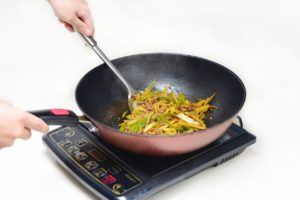 Induction cooking is known to be more efficient than gas and other heating methods because the latter result in much loss of heat to the surroundings. Comparatively, induction cooking heats the cooking vessel directly and not the air surrounding it. This reduces energy loss in the process. The temperature in the kitchen will also be lower which is more comfortable when cooking during the hotter months.
Induction cooking is known to be more efficient than gas and other heating methods because the latter result in much loss of heat to the surroundings. Comparatively, induction cooking heats the cooking vessel directly and not the air surrounding it. This reduces energy loss in the process. The temperature in the kitchen will also be lower which is more comfortable when cooking during the hotter months.
Because of the direct heating, very fast increase in temperature can also be achieved. You will also have more precise control of the cooking temperature because the cooktop temperature will match that of the cooking vessel.
In terms of safety features, induction cooktops tend to shut down automatically when a pot is taken away. If it can’t detect a cookware, it will turn itself off. The cooking surface is also not as hot compared to other types of cooktops.
With it being flat and smooth, induction cooktops are easy to clean. Spilled food is less likely to stick strongly to the surface which makes clean up much easier to handle.
What Is Induction Cookware?
If you have an induction cooktop, you need to have induction compatible cookware to go with it. This means your cookware needs to have high ferrous metal content at the bottom. If you have non-induction cookware, you will need to get a separate metal plate that can be heated by induction to use with your cooktop. However, this will be less efficient compared to using induction ready cookware.
Induction cookware will usually have a flat bottom that comes in direct contact with the cooktop. Bear in mind that the magnetic field decreases as the distance between the cookware and the cooktop increases.
Cast iron and certain stainless steel cookware will work with induction cooktops. Those pots and pans with a stainless steel exterior need to be magnetic for it to be induction compatible. You can test them with a magnet and if it sticks to the base, then they should be induction compatible.
Other metals like aluminum and copper do not work with induction cooktops. Instead, these elements are often inserted as a core into stainless steel or other types of cookware due to their heat conduction ability. This is how you get tri-ply or even 5-ply cookware like All Clad whereby aluminum or copper is the middle layer with a magnetic stainless steel outer layer to make it induction compatible.
Generally, induction compatible cookware can also be used on other types of cooktops like gas and electric.
Examples Of Induction Cookware
You should check if a cookware is induction ready before buying. Many people make the mistake of thinking that all stainless steel pots and pans are induction compatible. They are not. Even premium bramds like All Clad and Calphalon do not have induction ready cookware for all of their models. So, some of their pots and pans would not work on an induction hob. You can check if a cookware is induction ready by reading the product features and looking for the induction logo on the packaging.
If you are looking for non stick induction cookware, then your choices are more limited. For those on a smaller budget, there is the T Fal Professional which retails at a very affordable price range. If you want a better brand, you can take a look at the Circulon Infinite. And if you want to go high end, there is always the Zwilling Spirit and All Clad Hard Anodized cookware. In fact, the Zwilling is a ceramic cookware and there are very few of this type of cookware in the market that is also induction ready.
If you know how to cook with stainless steel cookware, then your choices will be much wider. The Lagostina Axia is one example of a stainless steel cookware that is induction ready. On the upper end of the scale, the Breville Thermal Pro is also another choice that you can consider.
Cast iron cookware are also suitable for use with induction cooktops. The Lodge Dutch Oven and cookware set are durable pieces that can last you a lifetime and they are perfect for slow cooking with their heat retention capability.
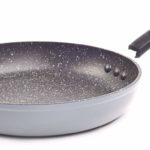
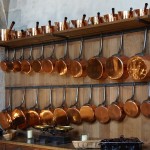
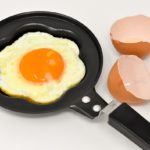
 0
0 

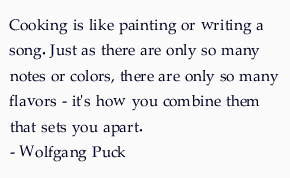

Speak Your Mind